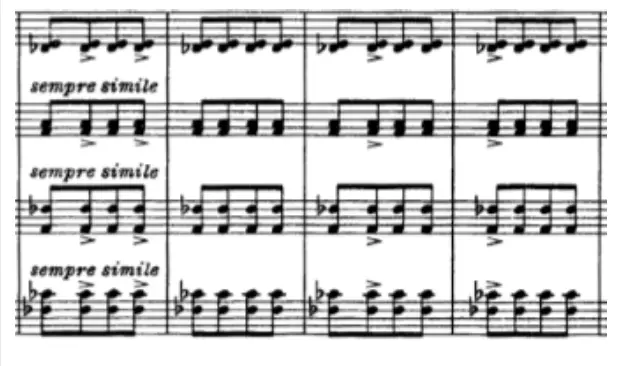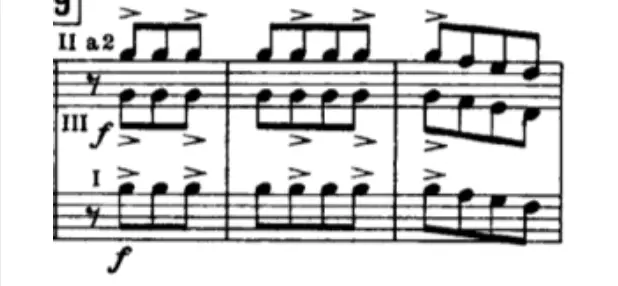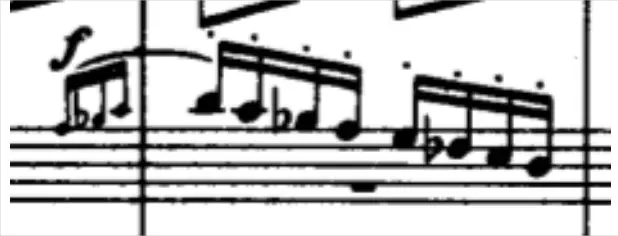Table of Contents
Introduction
I will begin by presenting the motives (in the order that they appear in the music), followed by an analysis of form, and lastly an annotated score that explores Stravinsky’s use of orchestration.
Motives
I have catalogued the various motives, listing details such as function, range, pitch centricity, reoccurrences, and any other relevant information.
| Bar | Motive | Details |
|---|---|---|
| 13 |  |
|
| 14 |  |
|
| 15 |  |
|
| 16 |  |
|
| 19 |  |
|
| 25 |  |
|
| 28 |  |
|
| 28 |  |
|
Form
My analysis of form will be primarily focused on how Stravinsky presents and develops the motives over the course of the movement. The sections are roughly based on melodic content, however it is difficult to identify a concrete form in this piece as there tends to be an overlap between sections. Stravinsky will often displace the introduction of a melodic motive from the moment a texture changes, which creates a few blurred lines. Nonetheless, I have based my decisions on what strikes me the most while listening rather than exactly what is printed on the page.

| Features | |
|---|---|
| A1 |
|
| B1 |
|
| A2 |
|
| C |
|
| B2 |
|
| D |
|